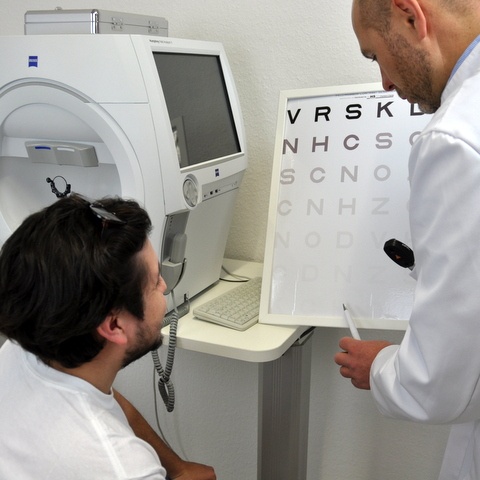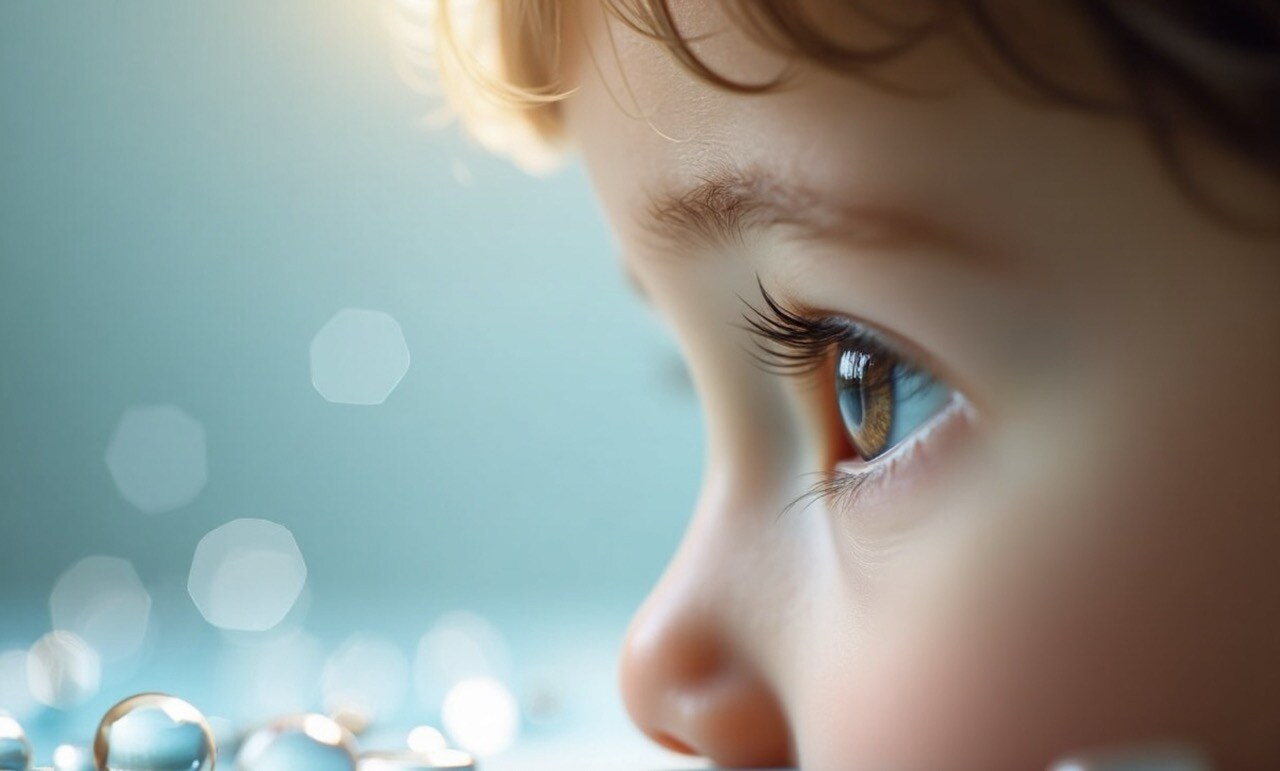Introduction
For decades, amblyopia treatment has adhered to a rigid timeline: intervene before the age of seven, or accept permanent visual deficits. This belief, rooted in the concept of the “critical period” in neurodevelopment, shaped generations of clinical protocols. However, emerging evidence in neuroscience now reveals a more nuanced view—one in which the brain retains measurable, functional plasticity even beyond early childhood. Among the most compelling real-world validations of this paradigm shift is Luminopia, a binocular virtual reality (VR) therapy that is showing measurable success in children previously considered beyond the age of effective treatment.
The Historical Barrier: Age-Dependent Plasticity
Traditionally, the visual cortex was believed to lose its capacity for reorganization shortly after early childhood. Classic studies of ocular dominance columns in animals, as well as human clinical experience, established the concept of a critical period—a limited window of heightened neuroplasticity typically ending around age 7 or 8. Beyond this, therapies such as patching or atropine generally showed diminishing returns, particularly in children who had not responded earlier. As a result, clinicians largely abandoned intensive amblyopia interventions in older children and adolescents.

Residual Plasticity: A New Understanding
Recent decades have seen a fundamental re-evaluation of this view. Neuroscientific research now supports the idea of residual and reactivatable plasticity in the adult and late pediatric visual systems. Functional MRI, perceptual learning studies, and molecular research in humans and animals show that visual pathways remain modifiable, especially when stimulated by binocular tasks that encourage interocular integration and suppress maladaptive cortical suppression.
Key mechanisms supporting this late-stage plasticity include:
-
Homeostatic regulation of inhibitory circuits, particularly reductions in GABAergic inhibition.
-
Modulation of perineuronal nets (PNNs), which normally limit synaptic flexibility.
-
Enhanced engagement of higher visual areas through attention-driven tasks.
Luminopia: A Case Study in Late Plasticity
Luminopia’s FDA-cleared therapy applies these neuroscientific principles in a practical, child-friendly format. Using a custom-configured VR headset, the therapy delivers dichoptic visual stimulation—modified video content streamed separately to each eye. The stronger (dominant) eye’s input is reduced in contrast or detail, encouraging the brain to integrate information from the amblyopic eye rather than suppressing it. Over time, this binocular training facilitates cortical adaptation and improvement in visual acuity and binocular fusion.

Critically, Luminopia’s clinical validation in children aged 8–12 years—a demographic previously thought beyond the reach of effective intervention—demonstrates that the visual cortex retains a capacity for structural and functional adaptation well past the traditional critical window.
Supporting Data and Regulatory Recognition
The FDA’s decision to expand Luminopia’s indication to include older children was based on real-world and trial-based outcomes. Key findings include:
-
Visual acuity gains averaging 1 line or more on standard charts in children who had plateaued with conventional therapy.
-
High compliance rates due to the gamified and engaging nature of the therapy, addressing one of the major limitations of patching.
-
Efficacy independent of early intervention history, suggesting that even previously untreated or treatment-resistant cases can benefit from binocular stimulation.
These outcomes directly challenge the assertion that visual therapy is ineffective after age 7. Instead, they illustrate that the brain remains capable of meaningful change—when the therapy is appropriately designed to harness that potential.
Implications for Clinical Practice and Research
The success of Luminopia offers several broader takeaways:
-
Reassessment of age limits in amblyopia treatment is warranted.
-
Binocular stimulation, not deprivation, may be more physiologically aligned with how plasticity operates beyond the critical period.
-
Neuroplasticity-based interventions should become central to rehabilitation approaches, not limited to early life.
For practitioners, this means expanding diagnostic and therapeutic consideration to include older children and potentially adults with residual amblyopia or binocular dysfunction.
Fedorov Restoration Therapy: Advancing Amblyopia Treatment Beyond the Critical Period
While traditional amblyopia treatments have focused on early childhood interventions, emerging therapies are challenging the notion that neuroplasticity is confined to a critical period. Fedorov Restoration Therapy, developed at the Restore Vision Clinic in Berlin, exemplifies this advancement by offering a non-invasive approach to stimulate visual improvement in older children and adults.
Key Features of Fedorov Restoration Therapy:
-
Non-Invasive Electrical Stimulation: Utilizes gentle electrical currents to activate residual retinal cells and optic nerve fibers, enhancing signal transmission to the brain.
-
Integration of Ophthalmology and Neurology: Combines insights from both fields to address complex visual impairments, focusing on the functional restoration of vision.
-
Personalized Treatment Plans: Tailors therapy to individual patient needs, considering the extent of vision loss and potential for improvement.
-
Clinical Experience: With over two decades of practice, the clinic reports that a significant proportion of patients experience visual improvements following therapy.
This therapy aligns with the growing body of evidence suggesting that the adult visual system retains a capacity for plasticity and functional recovery. By targeting the preserved elements of the visual pathway, Fedorov Restoration Therapy offers a promising avenue for those seeking alternatives to conventional amblyopia treatments.
Conclusion
Luminopia provides strong, clinically actionable evidence that the visual cortex retains learning potential well beyond early childhood. Rather than closing the book on plasticity after age 7, we are now turning a new page—one where technology, neuroscience, and therapeutic design converge to reopen doors once thought permanently shut. The brain, it seems, never fully stops learning—especially when we understand how to teach it.
Sources
-
Fuchs, E., & Flügge, G. (2014).
Adult neuroplasticity: more than 40 years of research.
This comprehensive review highlights the enduring capacity for neuroplastic changes in the adult brain, challenging the notion that significant plasticity is confined to early developmental periods.
https://pmc.ncbi.nlm.nih.gov/articles/PMC4026979/ -
Mowery, T. M., & Garraghty, P. E. (2022).
Adult neuroplasticity employs developmental mechanisms.
The study demonstrates that adult neuroplasticity utilizes mechanisms similar to those in development, suggesting potential for recovery and adaptation in adult sensory systems.
https://www.frontiersin.org/articles/10.3389/fnsys.2022.1086680/full -
Tran The, J., Magistretti, P. J., & Ansermet, F. (2022).
The critical periods of cerebral plasticity: A key aspect in a dialog between psychoanalysis and neuroscience centered on the psychopathology of schizophrenia.
This article explores the concept of critical periods in cerebral plasticity and their implications for understanding adult brain adaptability.
https://www.frontiersin.org/articles/10.3389/fnmol.2022.1057539/full -
McCulloch, D. L., & Thompson, B. (2019).
Older adults exhibit greater visual cortex inhibition and reduced plasticity.
The research indicates that while visual cortex inhibition increases with age, targeted interventions can still elicit plastic changes, supporting the potential for adult visual rehabilitation.
https://www.frontiersin.org/articles/10.3389/fnins.2019.00607/full -
Vedamurthy, I., Nahum, M., Bavelier, D., & Levi, D. M. (2015).
Mechanisms of recovery of visual function in adult amblyopia through a tailored action video game.
This study presents evidence that specific visual training can lead to functional improvements in adult amblyopia, indicating residual plasticity.
https://www.sciencedirect.com/science/article/pii/S0149763419303288 -
Han, S., Baker, J., & Jenewein, E. (2023).
Case Series: Neuroplasticity and Vision Therapy in Adults with Unilateral Small-Angle Esotropia.
The case series documents improvements in stereopsis and visual acuity in adults undergoing vision therapy, underscoring the adult brain's capacity for visual plasticity.
https://clinicalinsightsineyecare.scholasticahq.com/article/94928-case-series-neuroplasticity-and-vision-therapy-in-adults-with-unilateral-small-angle-esotropia -
Lunghi, C., & Sale, A. (2015).
Amblyopia: A model for studying adult visual plasticity.
This review discusses how amblyopia serves as a model for understanding the mechanisms and potential of adult visual plasticity.
https://www.nature.com/articles/tp201729
Disclaimer
The information presented in this blog is intended solely for educational and informational purposes. It does not constitute medical advice, diagnosis, or treatment recommendations. While the content discusses therapies such as Luminopia and Fedorov Restoration Therapy, individual patient needs vary, and treatment decisions should be made in consultation with qualified healthcare professionals. Individual results may vary. The effectiveness of Fedorov Restoration Therapy depends on various factors, including the specific condition and overall health of the patient. It is essential to consult with a qualified healthcare professional to determine the most appropriate treatment for your situation. The authors and publishers of this blog do not assume any liability for the accuracy, completeness, or applicability of the information provided. Readers are advised to consult with their healthcare providers before making any decisions related to medical care or treatment options.




Comments
Currently, there are no comments. Be the first to post one!